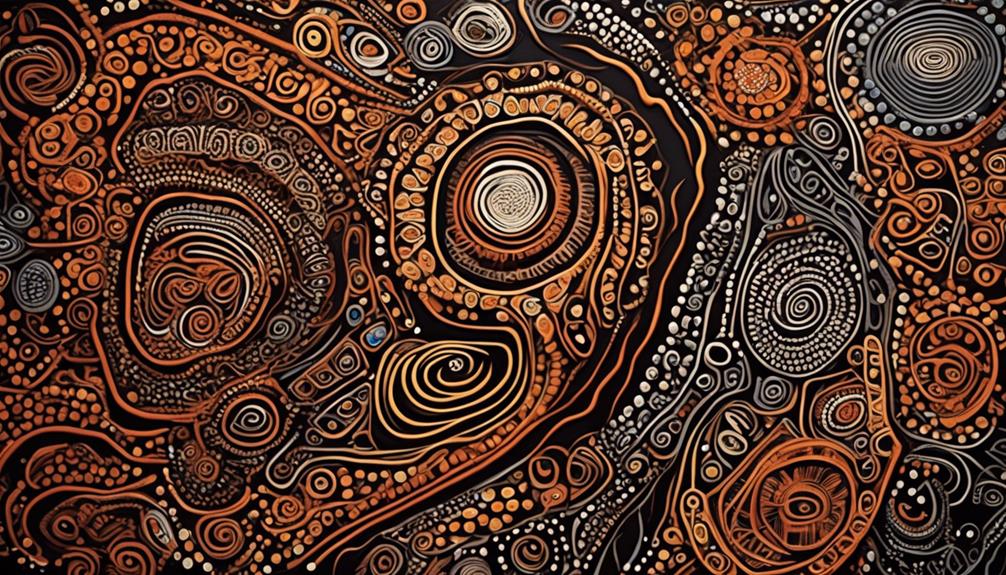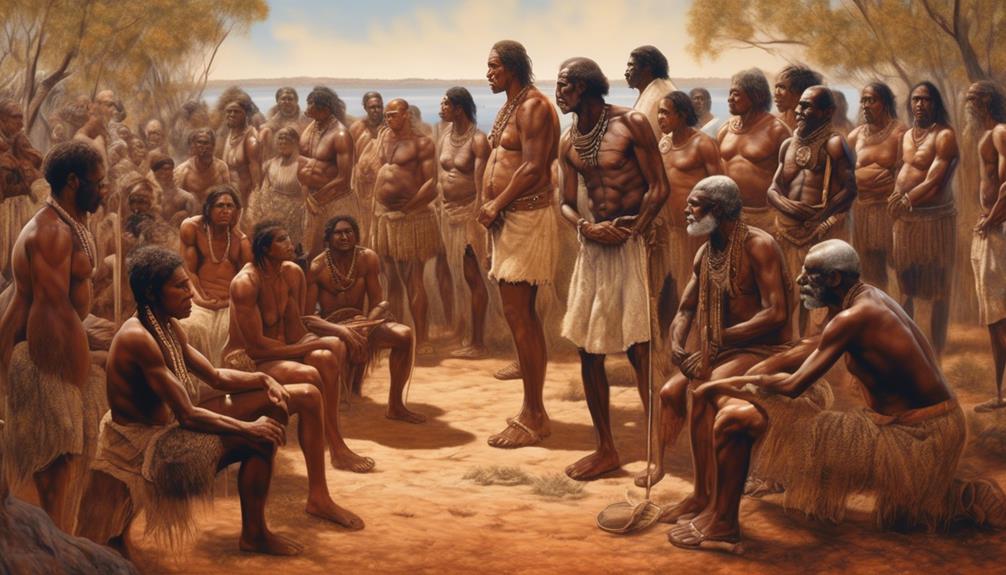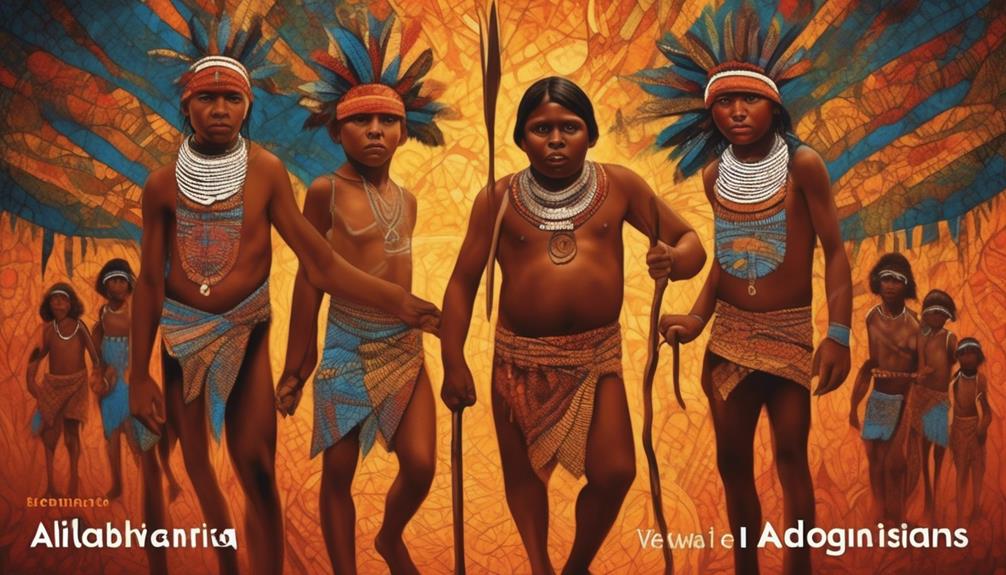Standing on the modern shores of Australia, understanding the historical significance left behind by the ancient inhabitants who first walked this land is a difficult task. The enigma surrounding the original arrival of the Aboriginal people in Australia has intrigued scholars and researchers for decades.
With a blend of archaeological evidence, genetic studies, and oral histories, we are slowly uncovering the intricate tapestry of their arrival and the impact it had on shaping the history and culture of this vast continent.
But as we begin to unravel this complex story, one can't help but wonder about the fascinating journey that brought the Aboriginal people to this ancient and enigmatic land.
Key Takeaways
- Aboriginal people arrived in multiple waves over thousands of years, supported by archaeological evidence and analysis of ancient human remains.
- Genetic studies and ancestral connections provide evidence of Aboriginal presence for tens of thousands of years, tracing migration patterns through genetic analysis.
- Aboriginal culture and history have had a significant impact on Australian society, enriching artistic expressions and leading to societal changes and greater recognition of indigenous rights and contributions.
- Aboriginal people comprise hundreds of distinct cultural groups with their own languages and traditions, contributing to the richness of Australia's cultural landscape.
Theories of Aboriginal Arrival
There are multiple theories regarding the arrival of the Aboriginal people in Australia, each offering unique perspectives on their migration to the continent. Understanding the migration patterns of the Aboriginal people is crucial to comprehending their deep connection with the Australian land.
One prominent theory suggests that the Aboriginal people arrived in multiple waves, spanning over thousands of years. This theory aligns with archaeological evidence that indicates a gradual and ongoing migration rather than a single mass migration event. It highlights the complexity of their journey and the diverse paths they took to reach different parts of the continent.
Another theory focuses on environmental adaptation as a driving force behind the migration patterns of the Aboriginal people. It suggests that their movement was influenced by the changing climate and landscape of Australia. As the environment shifted, the Aboriginal people demonstrated remarkable resilience and adaptability, allowing them to thrive in various ecological niches across the continent. This theory emphasizes the resourcefulness and deep understanding of the land that enabled the Aboriginal people to navigate and settle in diverse environments.
Understanding these theories not only sheds light on the historical migration patterns of the Aboriginal people but also underscores their profound connection with the Australian landscape. It showcases their ability to adapt to diverse environments and thrive in harmony with the natural world, making their arrival in Australia a testament to their resilience and cultural richness.
Evidence From Archaeological Finds
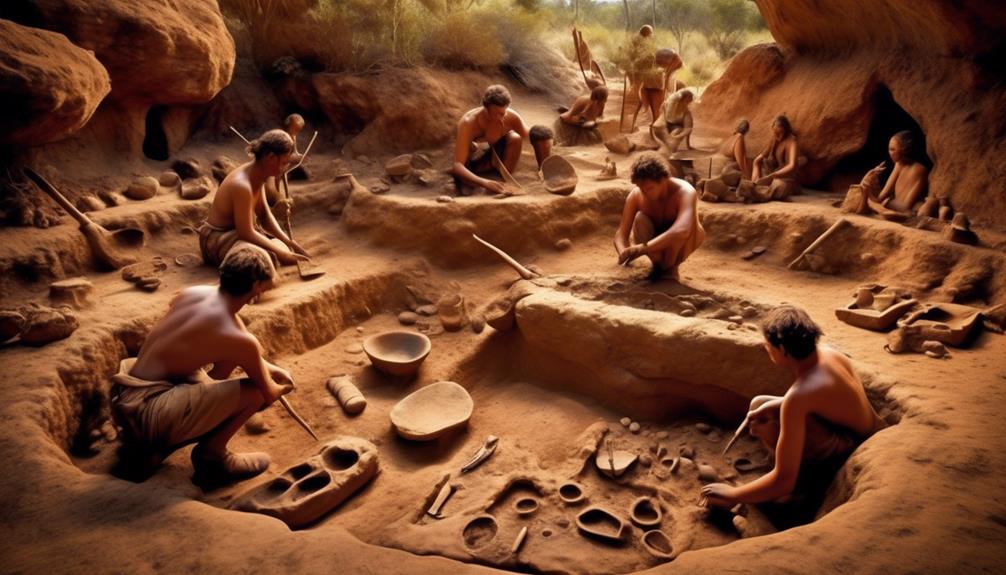
Archaeological finds offer compelling evidence supporting the multiple waves of migration and the environmental adaptation theories regarding the arrival of the Aboriginal people in Australia. The analysis of archaeological evidence has provided crucial insights into the migration patterns and the timeline of human settlement on the Australian continent. Through the excavation of ancient sites and the study of artifacts, researchers have been able to piece together a more comprehensive understanding of the complexities surrounding the arrival of the Aboriginal people.
One of the key pieces of archaeological evidence supporting the multiple waves of migration theory is the discovery of distinct stone tool technologies at different sites across Australia. These findings suggest that different groups of people with varying cultural traditions and technological knowledge arrived in the continent at different times. Additionally, the presence of ancient campsite remains, rock art, and ceremonial structures further supports the idea of multiple waves of migration and the subsequent adaptation to diverse environmental conditions.
Furthermore, the analysis of ancient human remains has provided valuable genetic and biological evidence, shedding light on the genetic diversity and potential ancestral links between different Aboriginal groups. This evidence has contributed to the understanding of the intricate migration patterns and the long history of human occupation in Australia.
Genetic Studies and Analysis
Genetic studies and analysis have provided crucial insights into the ancestral relationships and population movements of the Aboriginal people in Australia. Through advanced genetic techniques, scientists have been able to unravel the complex history of the Aboriginal population, shedding light on their origins and migration patterns.
Here are four key findings from genetic studies:
- Genetic Diversity: Studies have revealed a high level of genetic diversity among Aboriginal populations, indicating a deep and ancient lineage. This diversity reflects the complex and varied history of Aboriginal communities across the vast Australian continent.
- Ancestral Connections: Genetic analysis has established connections between Aboriginal populations and their ancient ancestors, providing evidence of the continuity of Aboriginal presence in Australia for tens of thousands of years.
- Migration Patterns: By analyzing the genetic makeup of different Aboriginal groups, researchers have been able to trace the migration patterns of these populations over time. This has allowed for a better understanding of how and when different groups arrived in various regions of Australia.
- Interactions with other Populations: Genetic studies have also revealed the interactions and intermixing between Aboriginal populations and other groups, such as Southeast Asian and Pacific Islander populations. These findings have contributed to a more comprehensive understanding of the complex interactions that have shaped the genetic landscape of Aboriginal people in Australia.
Oral Histories and Indigenous Knowledge
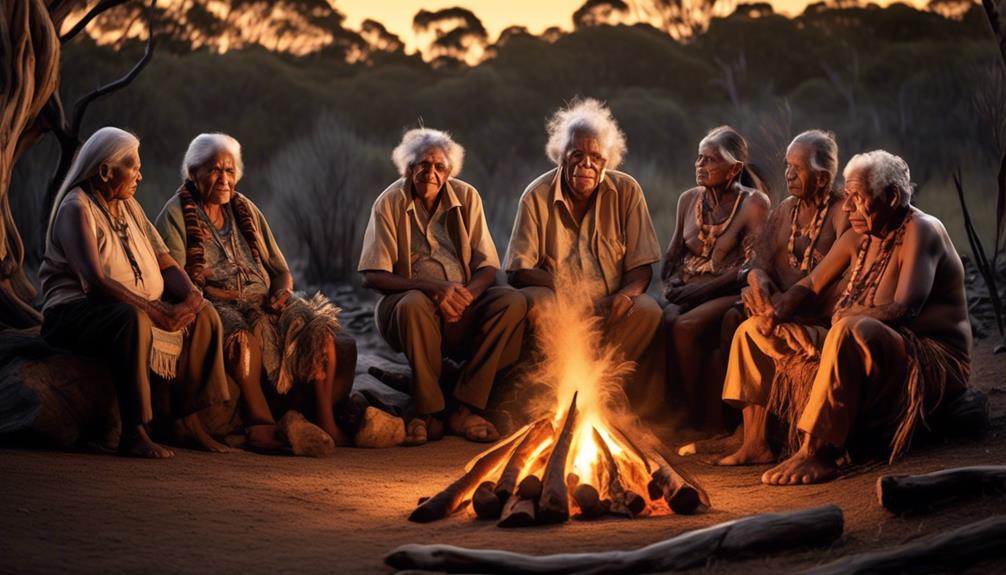
Drawing on centuries of oral traditions and indigenous knowledge, we gain invaluable insights into the rich cultural heritage and historical experiences of the Aboriginal people in Australia. Oral traditions, passed down through generations, provide a unique perspective on the Aboriginal people's connection to the land, their customs, and the historical events that have shaped their identity. These oral histories offer a profound understanding of the Indigenous perspectives, capturing the essence of their lived experiences in a way that written records can't fully encapsulate.
The preservation of oral traditions is crucial for maintaining the cultural integrity of the Aboriginal people. Through storytelling, songs, and ceremonies, important knowledge about the land, sacred sites, and spiritual beliefs is safeguarded and passed on to future generations. This cultural preservation is vital for the continuity of Indigenous heritage and the perpetuation of their rich history.
Moreover, incorporating indigenous knowledge into historical narratives enhances the accuracy and depth of our understanding. It provides an alternative lens through which to view historical events, offering insights that complement and sometimes challenge conventional academic interpretations. By acknowledging the value of oral traditions and Indigenous perspectives, we can strive for a more comprehensive and inclusive understanding of Australia's history, one that respects and integrates the voices of its First Nations people.
Impact on Australian History and Culture
Exploring the impact of oral histories and indigenous knowledge on Australian history and culture reveals the profound influence of Aboriginal perspectives and traditions on shaping the nation's identity. The cultural influence and societal change brought about by the Aboriginal people have left an indelible mark on Australia's history and continue to shape its contemporary culture. Here are four key ways in which the impact of Aboriginal history and culture has been profound:
- Cultural Influence: The Aboriginal people have contributed significantly to Australia's cultural landscape through their art, music, dance, and storytelling. Their rich cultural heritage has enriched the nation's artistic and creative expressions, influencing contemporary Australian literature, visual arts, and performing arts.
- Societal Change: The Aboriginal perspective has challenged and transformed societal norms and attitudes, driving conversations around reconciliation, social justice, and equality. Their enduring resilience and advocacy have spurred societal changes, leading to greater recognition and respect for indigenous rights and contributions.
- Land Ownership: Aboriginal connection to the land has played a pivotal role in shaping Australia's approach to land management and conservation. Traditional practices such as controlled burning have been recognized for their ecological benefits, leading to collaborative efforts between indigenous communities and governmental agencies in environmental stewardship.
- Traditional Practices: Traditional Aboriginal practices, including bush medicine, hunting, and gathering, haven't only contributed to the diversity of Australian cuisine and traditional healing methods but also fostered a deeper understanding of sustainable living and respect for the environment.
The enduring legacy of Aboriginal history and culture continues to shape and enrich Australia's national identity, making it imperative to recognize and celebrate the profound impact of indigenous perspectives on the nation's history and culture.
Frequently Asked Questions
How Did the Arrival of the Aboriginal People Impact the Environment of Australia?
When the Aboriginal people arrived in Australia, their impact on the environment was significant. Their cultural practices, such as controlled burning and sustainable hunting, shaped the landscape and promoted biodiversity.
This cultural exchange with the environment allowed for a balanced ecosystem to thrive. The Aboriginal people's deep connection with the land and their sustainable practices played a crucial role in shaping Australia's environment and fostering a harmonious relationship with nature.
What Role Did Trade and Interaction With Other Cultures Play in the Arrival of the Aboriginal People?
Trade, interaction, and cultural exchange played a crucial role in the arrival of the Aboriginal people to Australia. Through migration and settlement, they engaged in cultural assimilation, shaping their traditions.
Interestingly, recent studies suggest that the Aboriginal people have been in Australia for at least 65,000 years, making them one of the oldest continuous cultures on Earth. This longevity underscores their deep connection to the land and the significance of their interactions with other cultures.
What Were the Social Structures and Customs of the Aboriginal People Upon Their Arrival in Australia?
We can explore the social structures, customs, and kinship systems of the Aboriginal people upon their arrival in Australia.
Their traditional practices, belief systems, and cultural traditions were shaped by the environment, impacting resource management and trade networks.
Cultural exchange and language evolution led to linguistic diversity.
Archaeological discoveries provide insights into ancient settlements.
These aspects highlight the rich heritage and complex societal organization of the Aboriginal people when they first arrived in Australia.
How Did the Arrival of the Aboriginal People Influence the Languages and Dialects Spoken in Australia?
Arrival of the Aboriginal people influenced the languages and dialects spoken in Australia through cultural exchange and language evolution.
As we interacted with the new arrivals, our language and dialects evolved to incorporate new words and expressions from their culture.
This led to a rich linguistic diversity in Australia, reflecting the interconnectedness of our communities and the enduring impact of the Aboriginal people on our language landscape.
What Are Some Lesser-Known Archaeological Sites or Findings Related to the Arrival of the Aboriginal People in Australia?
We've found several fascinating archaeological sites that shed light on the migration patterns of the Aboriginal people in Australia.
One notable find is the Madjedbebe rock shelter, dating back over 65,000 years, providing crucial insights into early human occupation.
Additionally, the discovery of ancient tools and artifacts in places like Lake Mungo and Warratyi Rock Shelter has offered valuable information about the Aboriginal people's arrival and settlement in Australia.
Conclusion
In conclusion, the arrival of the Aboriginal people to Australia has been a topic of debate and research for many years. Through archaeological findings, genetic studies, and oral histories, we're able to piece together a better understanding of their arrival and impact on Australian history and culture.
It's fascinating to note that the Aboriginal people have inhabited Australia for at least 65,000 years, making them the world's oldest continuous culture.
Mary is a passionate writer who brings creativity and a fresh perspective to our team. Her words have the power to captivate and inspire, making her an essential contributor to our content. Mary’s commitment to storytelling and dedication to promoting Indigenous culture ensures that her work touches the hearts of our readers. We’re fortunate to have her as part of our team.

